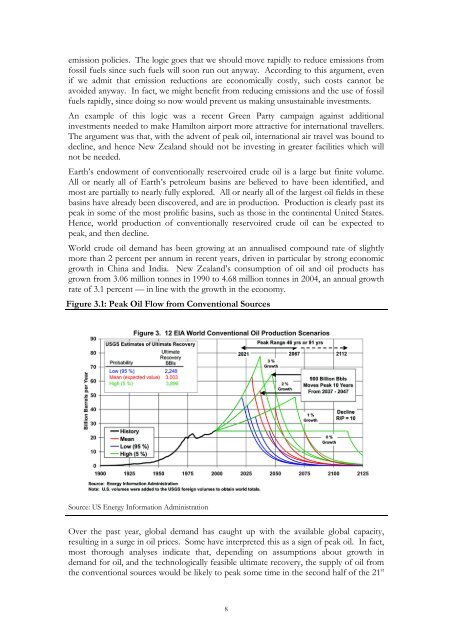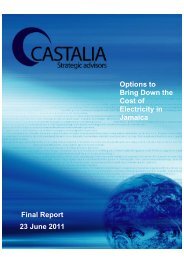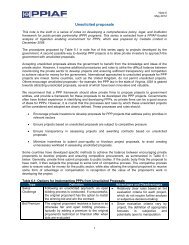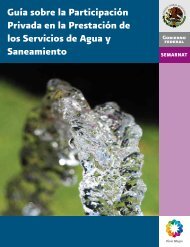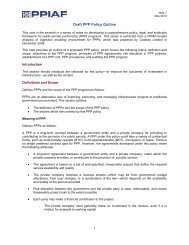Greenhouse Gas Emission Policies Is There a Way ... - Castalia
Greenhouse Gas Emission Policies Is There a Way ... - Castalia
Greenhouse Gas Emission Policies Is There a Way ... - Castalia
You also want an ePaper? Increase the reach of your titles
YUMPU automatically turns print PDFs into web optimized ePapers that Google loves.
emission policies. The logic goes that we should move rapidly to reduce emissions from<br />
fossil fuels since such fuels will soon run out anyway. According to this argument, even<br />
if we admit that emission reductions are economically costly, such costs cannot be<br />
avoided anyway. In fact, we might benefit from reducing emissions and the use of fossil<br />
fuels rapidly, since doing so now would prevent us making unsustainable investments.<br />
An example of this logic was a recent Green Party campaign against additional<br />
investments needed to make Hamilton airport more attractive for international travellers.<br />
The argument was that, with the advent of peak oil, international air travel was bound to<br />
decline, and hence New Zealand should not be investing in greater facilities which will<br />
not be needed.<br />
Earth’s endowment of conventionally reservoired crude oil is a large but finite volume.<br />
All or nearly all of Earth’s petroleum basins are believed to have been identified, and<br />
most are partially to nearly fully explored. All or nearly all of the largest oil fields in these<br />
basins have already been discovered, and are in production. Production is clearly past its<br />
peak in some of the most prolific basins, such as those in the continental United States.<br />
Hence, world production of conventionally reservoired crude oil can be expected to<br />
peak, and then decline.<br />
World crude oil demand has been growing at an annualised compound rate of slightly<br />
more than 2 percent per annum in recent years, driven in particular by strong economic<br />
growth in China and India. New Zealand’s consumption of oil and oil products has<br />
grown from 3.06 million tonnes in 1990 to 4.68 million tonnes in 2004, an annual growth<br />
rate of 3.1 percent — in line with the growth in the economy.<br />
Figure 3.1: Peak Oil Flow from Conventional Sources<br />
Source: US Energy Information Administration<br />
Over the past year, global demand has caught up with the available global capacity,<br />
resulting in a surge in oil prices. Some have interpreted this as a sign of peak oil. In fact,<br />
most thorough analyses indicate that, depending on assumptions about growth in<br />
demand for oil, and the technologically feasible ultimate recovery, the supply of oil from<br />
the conventional sources would be likely to peak some time in the second half of the 21 st<br />
8


